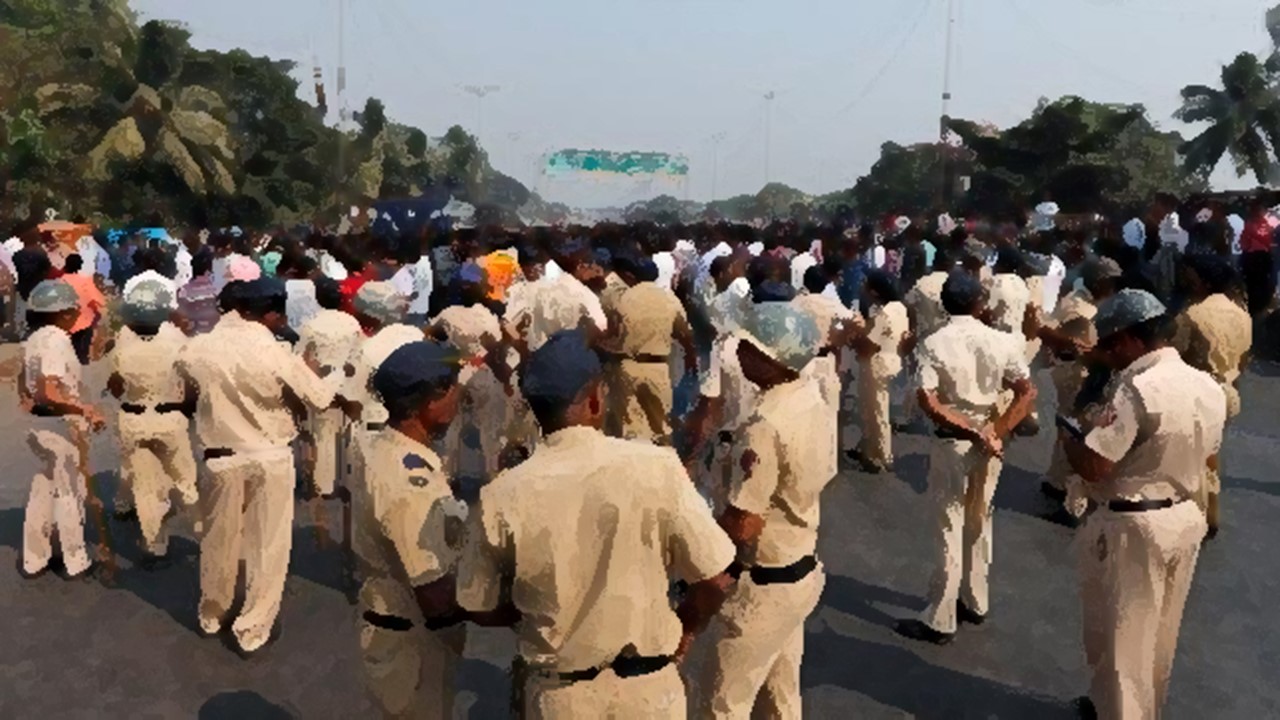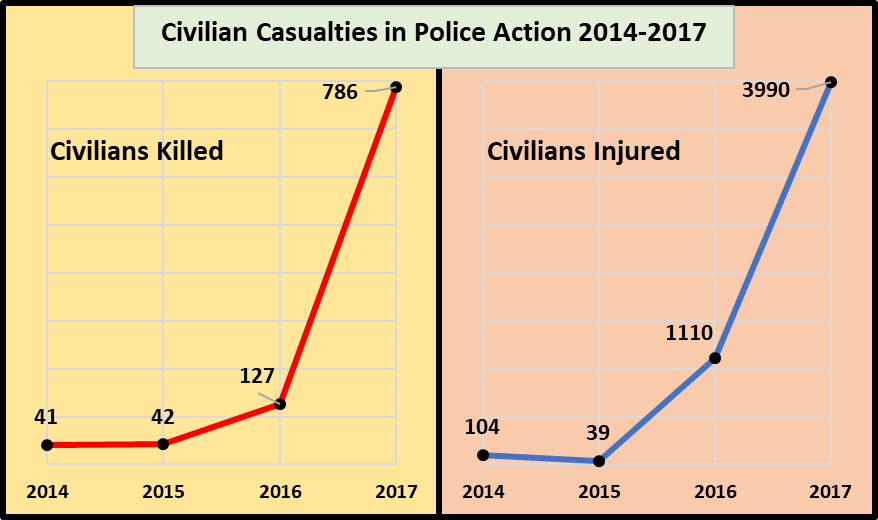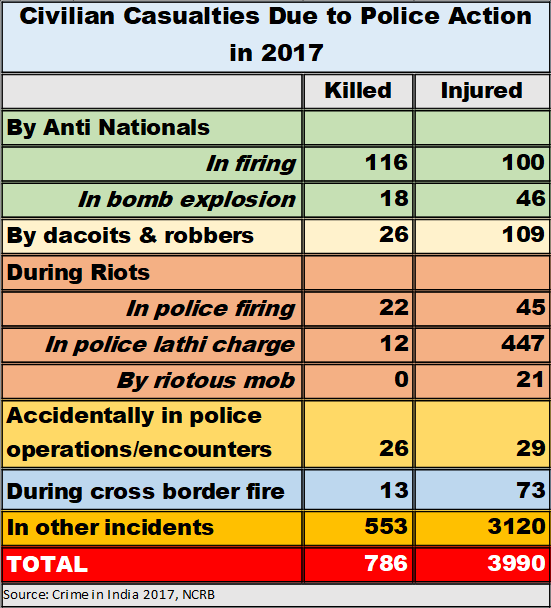Casualties among police personnel too rose as violent agitations confront trigger happy police, presumably backed by governments.

Representational image.
Foremost among these worries is this: the number of civilians killed in 2017 is more than six times the number in 2016 while the number of those injured is nearly four times more. [See chart below]

In fact, the number of casualties in police actions is steadily rising since 2015. Between 2015 and 2016, the number of civilian deaths tripled, followed by six times increase in the next year. The number of those injured has zoomed up from 39 in 2015 to a staggering 1,110 in 2016 and then more than tripled in 2017.
It seems that violent protests have increased and so has the violent response of the police forces. The violent response by police is an increasingly prevalent trend, legitimised by the government’s reliance on using force to settle any kind of protest. Remember, that this data pertains to police (which is under state government control) and not to central armed police forces, such as CRPF, etc. Casualties caused by actions of central security forces are thus not counted.
Why This Spike in Casualties?
A combination of two factors appears to have caused this sharp and dramatic spike in casualties in 2017. These are: some definitional and classification changes in presenting the data and the inescapable fact that 2017 saw many violent confrontations between social protests and police forces.
First, let us look at the new way in which casualty data is presented in the 2017 report. The table below gives the break-up of how 786 people were killed and 3,990 injured in 2017. This is taken verbatim from the National Crime Records Bureau (NCRB) report.

There are several noteworthy things in this. A total of 134 people killed and 146 injured are ascribed to ‘Anti-Nationals’. Since the data is about police actions, why include this?
If one looks at state-wise data, the answer is clear. Bulk of these casualties are in Jammu & Kashmir and Chhattisgarh, where militancy and ultra-Left activities are rampant, respectively. In both cases, violent confrontations between police forces and the militants/insurgents takes a toll of civilians. So, perhaps, that may explain why these get included here under ‘civilian casualties during police actions’.
But the real puzzle comes at the end. Casualties in “other incidents” are 553 dead and 3,120 injured, making up 70% of all killed and injured. No explanation is provided about the nature of these “other incidents”. These are not riots or encounters or anti-dacoit operations because these are listed separately.
Again, one gets a hint from the state-wise breakup provided separately in the NCRB report. Bharatiya Janata Party-ruled Haryana is shown to have had 431 deaths and 839 injured in these “other incidents”, accounting for nearly 78% of all deaths and 27% of all injured in “other incidents”.
What happened in Haryana in 2017? There was a wave of violent protests by followers of Baba Ram Rahim after his arrest in August 2017 that spread state-wide and was eventually ruthlessly suppressed by the police. The ‘Baba’ had been a vocal supporter of the ruling BJP, which perhaps led to initial police laxity in allowing the violence to spread. This particular incident doesn’t explain the high number of casualties in “other incidents” but does give a hint of what is involved – confrontation between protestors and police.
What this all boils down to is that – at least in 2017 – violent clashes between protestors and police caused the majority of casualties.
The other leading state in this type of casualties is Uttar Pradesh, where the BJP came to power in March 2017. Here, 88 deaths are 75 injured are reported as “other incidents”.
Unsurprisingly, casualties among police personnel, too, have risen precipitously. Compared with just five deaths and 5,440 injured in 2016, the NCRB report says that 840 police personnel died and 2,684 were injured in 2017. But included in this are 13 who died ‘Accidentally by self-weapon’ as the report puts it and, surprisingly, 502 who died in ‘accidents’. This latter is unexplained. Even if these two categories are deducted, police casualties in 2017 are very high at 325 deaths and 2,329 injured.
The sharply rising body count in police actions is all the more shocking considering that these years have seen the rise of horrific cases of mob lynchings and cow vigilante violence, which rarely see police interventions. In most cases violent police intervention appears to be done against agitations by various sections of people fighting for their rights and demands.
Courtesy: News Click